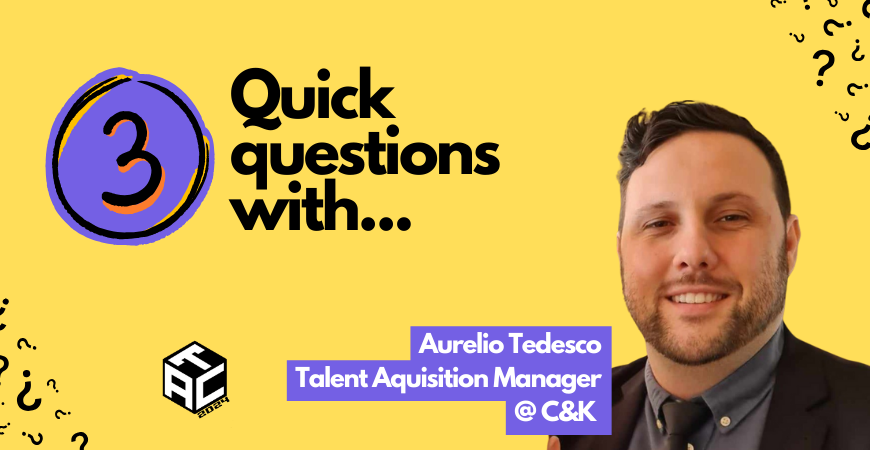The coronavirus has accelerated the adoption of a number of significant employment trends – and will continue to do so. All this change brings challenges that leaders need to address, one of which is workforce planning.
At this point in time, organisations have two main Talent challenges – one is preserving their current workforce and the second is ensuring that they have the right skills and professionals in place for the longer-term. To help guide your thinking, we share the following advice.
Workforce planning
A good starting point is to assess the skills needed to bring your organisation out of the crisis and help it transition back to growth. This may include hiring for new permanent skill sets and making use of a Contingent Workforce as operating models shift.
Alternatively, you may see peaks and troughs in your business that will continue to be hard to predict, which may require you to hire temporary or contract workers to meet these demands.
While the future is unknown, it may help to make use of the data available to you. By assessing sales, productivity and output across business units, as well as broader industry-specific trends, employers should be able to make a judgement call around their short to mid-term workforce requirements.
Don’t forget to put in place contingency plans for staff who have been supporting other departments or have taken on duties outside their usual remit. Will you transition them back to their pre-COVID-19 role? If so, when?
Be aware of skills in demand
Regardless of which stage your organisation is at in terms of recovery, demand for niche or emerging skills will remain high. Therefore, beginning your skills assessment now will ensure that, once your organisation is ready, you will have access to the Talent you need to transition back to growth.
After all, the skills in demand are changing rapidly in response to shifting operating models and the economic and social pressures resulting from the pandemic. Each individual organisation should therefore look urgently at your own circumstances to identify critical roles. As many organisations move to more online working models, either permanently or through the creation of hybrid teams, the demand for skills in areas such as IT, digital, legal, change management, HR and customer service is likely to exacerbate.
It is also important to consider timing. Although we have had hundreds of candidates start new permanent roles over the past month, some organisations are preferring to start recruitment now for a later start date. The main reason for this is to give HR departments time to get their existing workforce safely back to work.

Your recruitment processes
Until social distancing measures ease, there are a few changed recruitment processes and considerations you should be aware of.
Firstly, when looking to attract candidates, refer to working arrangements and shift patterns in all of your job descriptions, advertising and recruitment websites. Explicitly state what working equipment will be provided to candidates if they are expected to work remotely.
Ensure that your organisation is set up to receive online applications, and review connectivity and compliance of your applicant tracking system to other new tools that you may have added to your recruitment methodology.
It is also advisable to ensure that your hiring managers are enabled to review applications swiftly. This may include the ability to send and read CVs online and via smartphones.
When it comes time to interview candidates, ensure that all hiring managers receive the right support and training to run effective virtual interviews. There is a wealth of information available online about this, including our guide on conducting remote interviews.
Before onboarding new starters, work closely with your IT department to ensure that it is possible to virtually (and quickly) onboard people. This will help you provide a seamless and consistent employee experience. You may need to consider investing in or upgrading technology platforms to facilitate this.
You should also put together a robust digital induction programme for new starters to ensure they receive the same level of support.
Finally, consider how your EVP will need to evolve for the new era of work. Get feedback from your staff about what aspects matter most to them, as well as what they have enjoyed and what’s worked well during the crisis period. Ask about their wellbeing and personal development needs. This won’t give you all the answers but will help to form your thinking on how your EVP may need to adapt.
Considerations for the future
When planning for the future, you can start to look holistically at how your operating model may continue to evolve and what the knock-on effect would be on the workforce and skills required.
This includes deciding what working arrangements you will offer your staff in the future. There are many benefits to be gained from continuing to allow employees to work flexibly, not least of which is the ability to access Talent from a wider geographical area than was previously possible. Given this, you need to evolve your recruitment messaging accordingly.
In addition, the rate of digitisation has rapidly increased, but how else will this impact your business operations? Do you need additional technology and IT skills to support this ongoing investment? If so, how will your organisation access and hire for the technology skills required?
How will the way you interview and assess candidates need to evolve? Will the future outlook mean investment in more sophisticated technologies such as VR to improve the candidate experience?
Meanwhile, you should also think about the adaptability and other soft skills that your workforce will require to operate effectively in the future. Does this mean a shift in candidate assessment for evaluation of soft skills, such as resilience, adaptability, problem-solving and teamwork?
This crisis may have shaped your future needs in unexpected ways, but it doesn’t have to define your business. As you consider your staffing and hiring position, the following questions may help:
- Does your organisation want to offer more or less flexibility to employees in the future?
- If more, can you now recruit from a much wider geographical area than was previously possible?
- How does your employer value proposition and employer branding material need to evolve to maintain competitiveness if workplace arrangements are permanently changed? Similarly, how will they need to evolve if you don’t make permanent changes, but your competitors do?
- What skills will you need in your workforce?
- What areas need a strategic Talent roadmap, for example, IT?
- What soft skills will you need to assess candidates against when hiring?
To help you devise solutions that will have a positive impact on your organisation, we have recently published our New Era of Work guide. In it, we share insights and pose questions to shape your longer-term thinking about how approaches to operations, people and workforce planning may need to shift. Download your copy today.
Cover image: Shutterstock
This article is contributed by Hays Talent Solutions.
Become an unstoppable force for good at this year’s ATC2020 DIGITAL. Tickets on sale now, see you online!Image





























